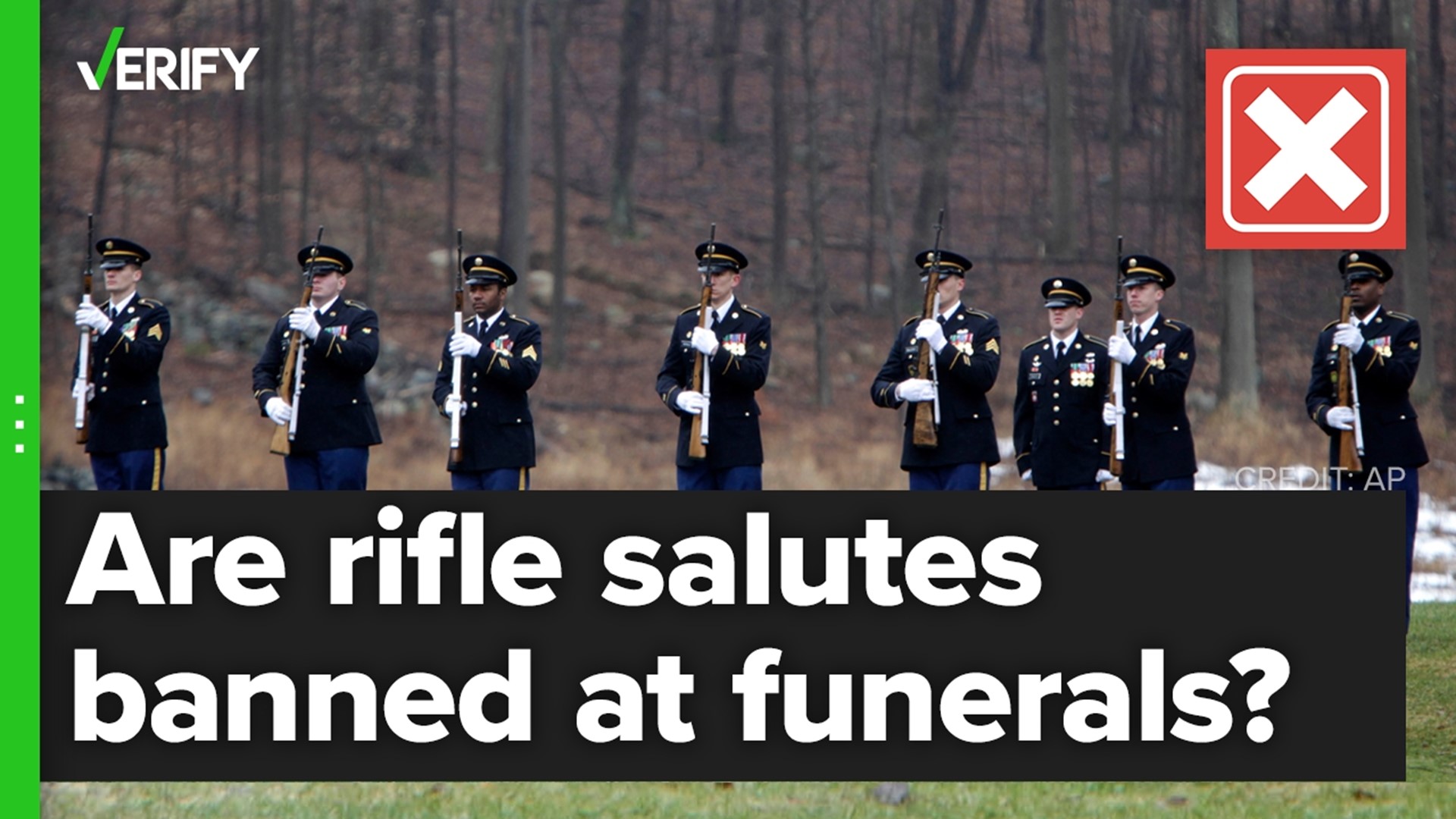When most people think of military funerals, they likely think of “Taps” played on the trumpet, folded flags and rifles fired in salute.
But VERIFY viewer Gus didn’t see any rifle salutes at the last two military funerals he attended, leading him to email the VERIFY team to ask, “Are 21-gun salutes not allowed anymore?”
THE QUESTION
Is the three-rifle volley, often called the “21-gun salute,” now banned from military funerals?
THE SOURCES
- Department of Veteran Affairs
- Arlington National Cemetery
- American Legion
- Department of Defense
- National Cemetery Administration
- California Department of Veterans Affairs
- Air Force
THE ANSWER
No, the three-rifle volley has not been banned from military funerals. However, its availability depends on personnel.
WHAT WE FOUND
Rifle volleys are still allowed at military funerals; however, the military now only requires a minimum of two personnel to be present for military funeral honors, which is not enough for a firing party to provide a traditional rifle salute.
“We are not aware of any state bans of 21-gun salutes as part of military honors,” a Department of Veteran Affairs spokesperson said in an emailed statement. “National cemeteries are federal properties, therefore, even if a state ban existed, it would not apply to VA national cemeteries.”
The Department of Veteran Affairs added that “21-gun salute” is the wrong wording for the rifle salute used in military funerals. The Arlington National Cemetery calls the military salute a three-volley salute or a three-rifle volley. The American Legion says a three-rifle volley “consists of no less than three and no more than seven rifles firing three volleys in memory of the fallen.” A 21-gun salute uses a battery or artillery pieces instead of rifles and is reserved for heads of state, like the president or a former president.
But the military no longer requires branches to provide at least five personnel for funerals, which means a three-rifle volley isn’t always possible. The Air Force announced in 2013 it would require just two personnel for military funeral honors going forward, a change it said came as a result of resource sequestration.
This is consistent across the military. The Department of Defense says the honor guard detail for military funerals is to consist of at least two members of the U.S. Armed Forces, and the honor detail will perform “Taps,” and the folding and presenting of the American flag to the deceased’s next of kin. The National Cemetery Administration further confirms military funerals require at least two members of the U.S. Armed Forces, “Taps” and a flag-folding presentation.
Just because a firing party isn’t always available for military funerals doesn’t mean three-rifle volleys never happen. Arlington National Cemetery, for example, includes a firing party at all of its military funerals. Other national cemeteries also allow “authorized providers,” such as the American Legion and Veterans of Foreign Wars, to provide a firing party, if requested by the family and if the organization has volunteers who can perform the duties.
In California, where VERIFY viewer Gus said he attended the military funerals, the state’s Department of Veterans Affairs said in an email it allows both full military honors — which include a firing party — and partial military honors at its veterans’ cemeteries. “However, this is not a service we provide so families generally request them from either a branch of the U.S. Armed Forces or from a local veterans’ organization that performs the honors,” its spokesperson clarified.
More from VERIFY: No, Facebook is not banning posts containing the Lord’s Prayer

